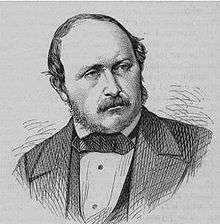Prince Albert v Strange

Prince Albert v Strange was a court decision made by the High Court of Chancery in 1849, and began the development of confidence law in England.[1] The court awarded Prince Albert an injunction, restraining Strange from publishing a catalogue describing Prince Albert’s etchings. Lord Cottenham LC (Charles Pepys, 1st Earl of Cottenham) noted that "this case by no means depends solely upon the question of property, for a breach of trust, confidence, or contract, would [sic] of itself entitle the plaintiff to an injunction".
Summary
Both Queen Victoria and Prince Albert sketched as a hobby. Sometimes they showed them to friends or gave them away. Strange obtained some of these sketches from a person named Brown[2] and scheduled a public viewing of these. He also published a catalog listing these sketches. Prince Albert filed suit for the return of the sketches and a surrender of the catalog for destruction. His plea was granted.[3]
See also
References
- ↑ Bently, Lionel, Prince Albert v Strange (1849), in: Mitchell, Charles/Mitchell, Paul Mitchell (Ed.), Landmark Cases in Equity 2012, p.235–267.
- ↑ "Prince Albert v Strange: ChD 8 Feb 1849". Swarb.Co.Uk. 17 June 2016. Retrieved 12 September 2017.
- ↑ Spetz, Steven N. (1974). Can I sue? : an introduction to Canadian tort law. Toronto: Pitman Pub. pp. 29–30. ISBN 0273041894.
- (1849) 1 H & Tw 1, 2 De G & SM 293, (1849) 1 Mac & G 25, [1849] EWHC Ch J20, [1849] EngR 255, (1849) 41 ER 1171, [1849] EngR 261, (1849) 47 ER 1302, (1849) 2 De Gex & Sim 652